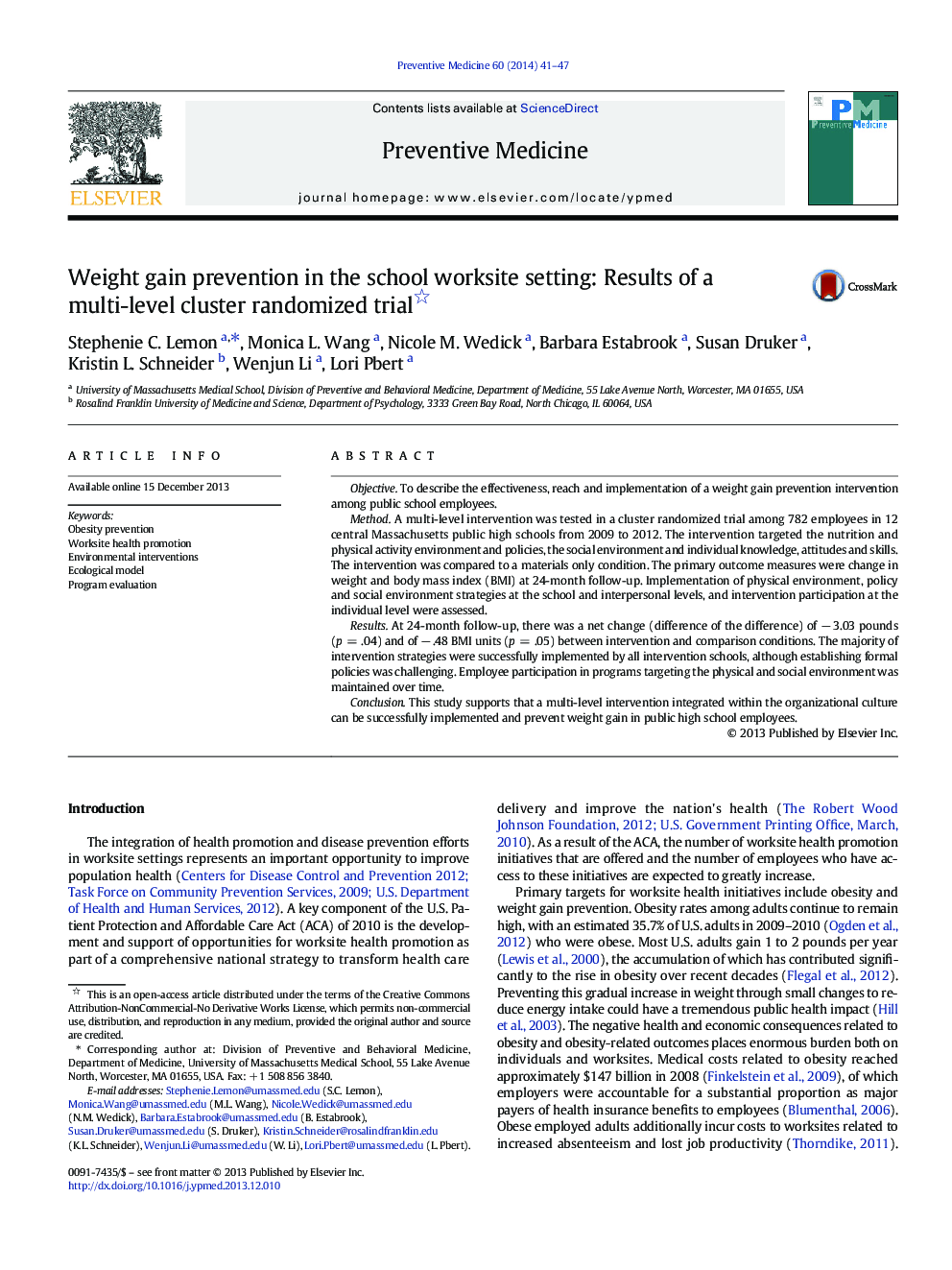| Article ID | Journal | Published Year | Pages | File Type |
|---|---|---|---|---|
| 6047351 | Preventive Medicine | 2014 | 7 Pages |
â¢Multi-level interventions can prevent weight gain in public high school employees.â¢Integration within the organizational culture is critical.â¢Environmental interventions are achievable, but formal policies are challenging.â¢Investments in champions and dynamic interventions maintain participation.
ObjectiveTo describe the effectiveness, reach and implementation of a weight gain prevention intervention among public school employees.MethodA multi-level intervention was tested in a cluster randomized trial among 782 employees in 12 central Massachusetts public high schools from 2009 to 2012. The intervention targeted the nutrition and physical activity environment and policies, the social environment and individual knowledge, attitudes and skills. The intervention was compared to a materials only condition. The primary outcome measures were change in weight and body mass index (BMI) at 24-month follow-up. Implementation of physical environment, policy and social environment strategies at the school and interpersonal levels, and intervention participation at the individual level were assessed.ResultsAt 24-month follow-up, there was a net change (difference of the difference) of â 3.03 pounds (p = .04) and of â .48 BMI units (p = .05) between intervention and comparison conditions. The majority of intervention strategies were successfully implemented by all intervention schools, although establishing formal policies was challenging. Employee participation in programs targeting the physical and social environment was maintained over time.ConclusionThis study supports that a multi-level intervention integrated within the organizational culture can be successfully implemented and prevent weight gain in public high school employees.
